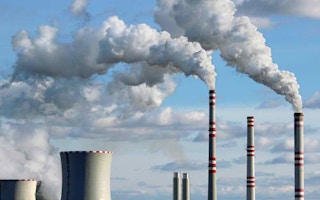China’s plan for a market in air pollution permits promises to help clean up its air cheaply, but the move could prove just as useless as previous environmental policies unless the government stamps out lax enforcement and spotty data.
Smog regularly blankets the country’s major urban centres and kills half a million people each year.
The news of plans to launch a market within three years demonstrates China’s growing will to tackle environmental problems through market-based tactics, rather than its traditional command-and-control measures.
China has already launched several regional pilot markets to fight rapidly rising greenhouse gas emissions, but even a well-designed pollution market would not work unless the government made sure companies followed the rules, experts said.
“
Enforcement is a common problem in China, where state-owned enterprises routinely pay government fines instead of meeting environmental regulations, and fake emissions data is a growing problem
“Enforcement will be important to create confidence and establish the credibility of pollution permits,” said Olivia Boyd, an energy analyst at IHS World Markets Energy.
This credibility is vital to ensure any emissions trading scheme is stable in the long term, she added.
If buyers lack confidence in the quality of permits, prices and market liquidity would suffer, making them inefficient as an investment driver, Boyd told Reuters.
Enforcement is a common problem in China, where state-owned enterprises routinely pay government fines instead of meeting environmental regulations, and fake emissions data is a growing problem.
The country has had little success in efforts to boost the powers of the environment ministry to enforce pollution rules.
China has not released any details of its plan, but a pollution market would probably target emissions such as sulphur dioxide (SO2) and nitrous oxide (NOx) from power plants and industrial boilers.
Most power plants have installed scrubbers to cut those emissions, but few use them, as they swell running costs by around 10 per cent.
To make such a market effective, China would need to set emission caps sufficiently tight to make permits costly enough to drive investment in cleaner technologies.
But such a move will probably stir up strong opposition from powerful state firms and local governments dependent on tax revenue from big polluters.
“There are still vested interests here that are very strong, and they are going to oppose this,” said Barbara Finamore, China director at US think-tank the National Resources Defense Council (NRDC).
The first year of trading in Shenzhen, the first of China’s seven regional carbon trading markets, ended with a 10 per cent surplus of permits, showing how hard it is to draft environmental rules that bite.
But an efficient SO2 market might spur generators to import more low-sulphur coal from Australia and Southeast Asia, said Deborah Seligsohn, a China energy and environment expert at the University of California at San Diego, besides helping to push up imports of natural gas.










